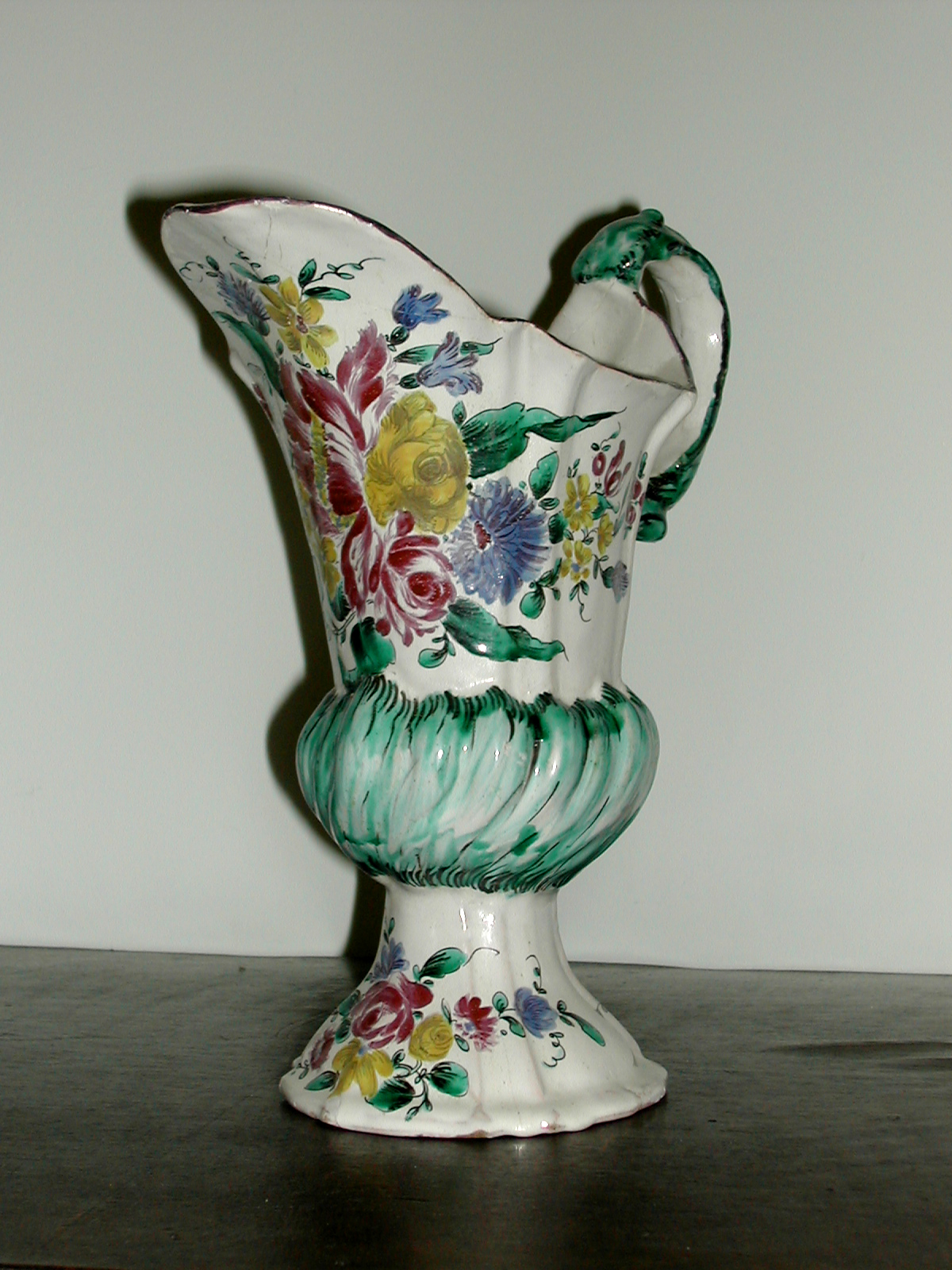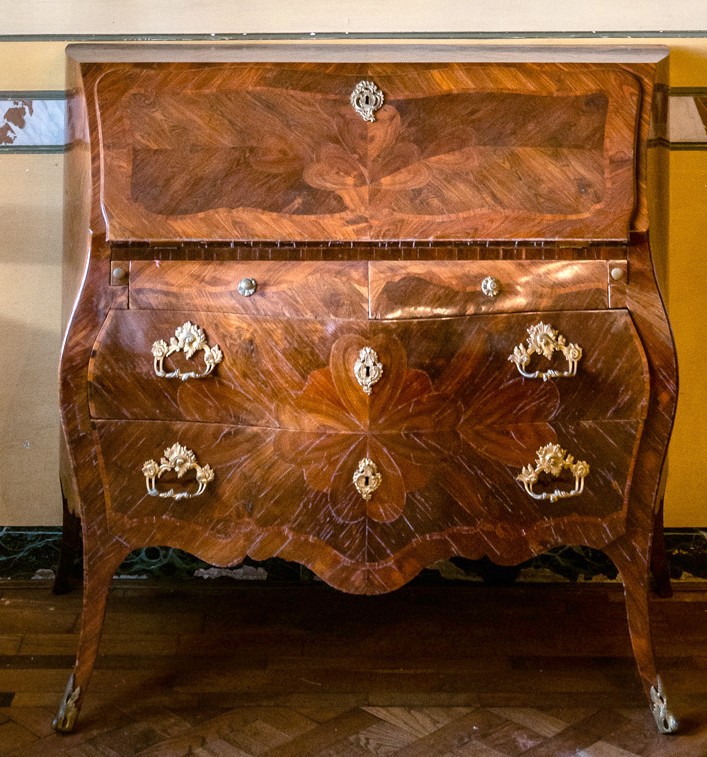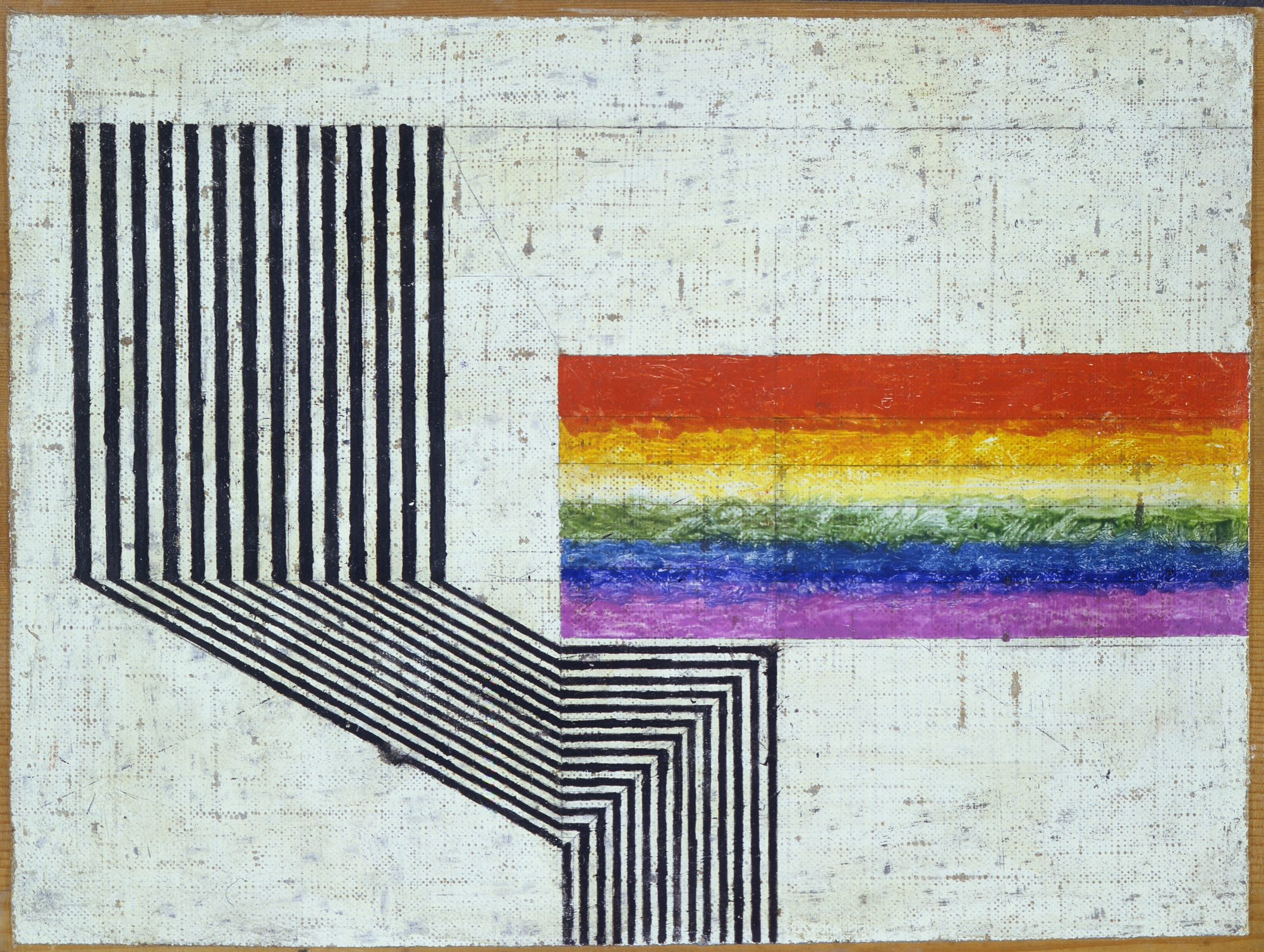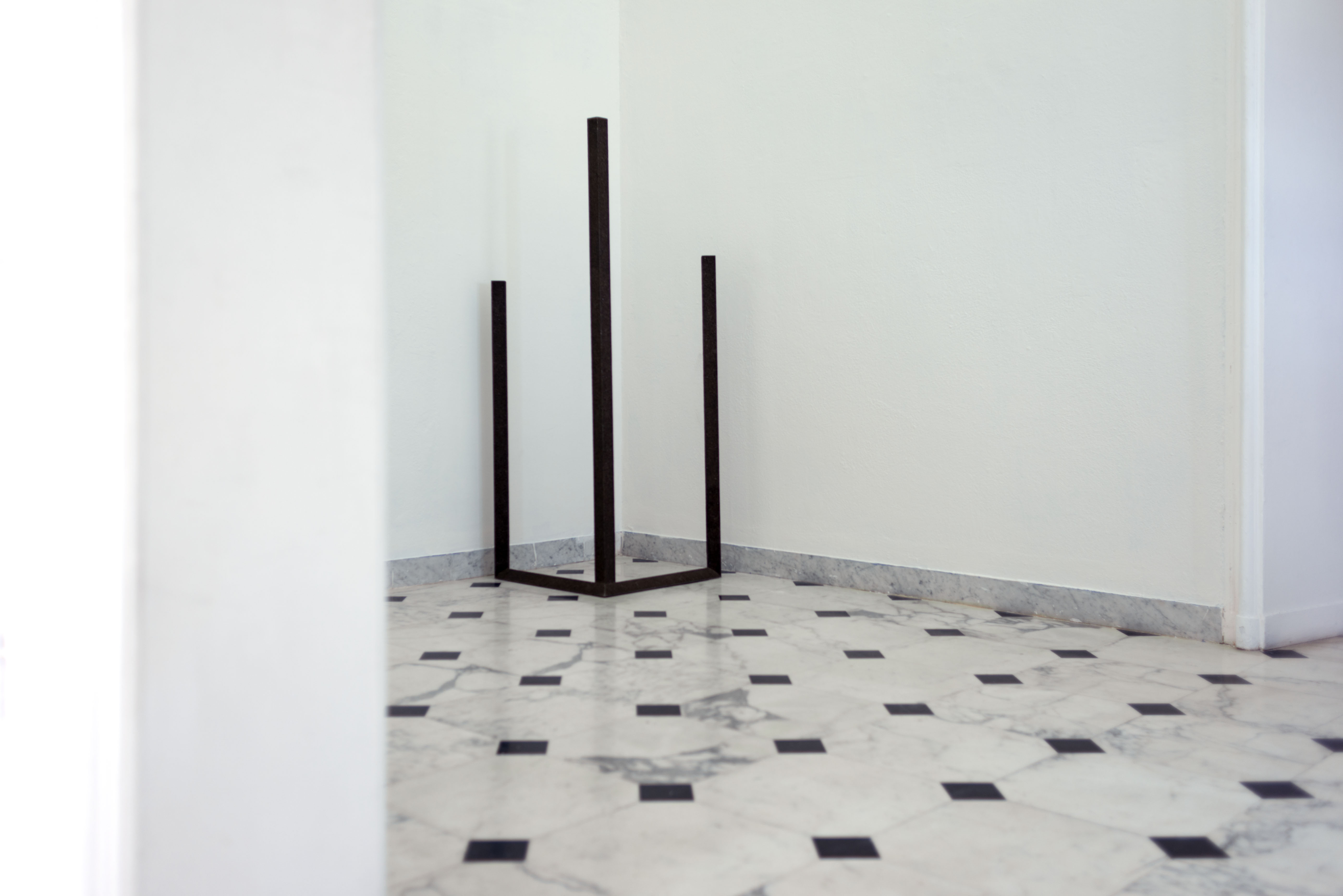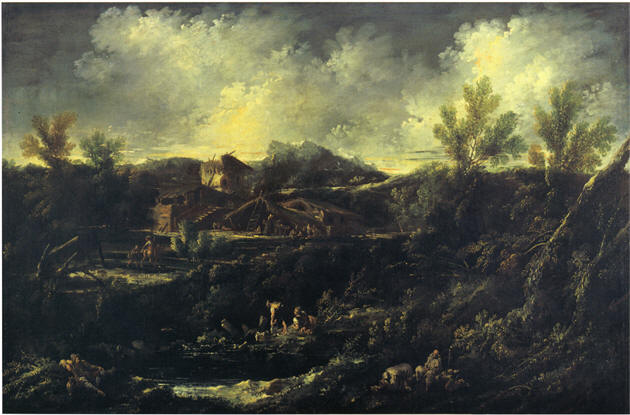
Click here to view image
Landscape with rustic house, tower and figures
Legato Luxoro 1945 - legato
Peruzzini, Antonio Francesco
painting
1690 - 1710 - XVII-XVIII
M. G. L. 406
Unità di misura: cm; Altezza: 95 ; Larghezza: 147
olio su tela
The painting depicts a vast, open space, characterised by intricate vegetation, rendered with vibrant brushstrokes and an extraordinarily modern touch. An atmosphere of a ‘romantic’ tone dominates, but mitigated by the classical balance that pervades the composition. The figurines that populate the landscape are outlined with rapid strokes and dense patches of colour. The painting can be attributed to the hand of the landscape painter Antonio Francesco Peruzzini, despite an inventory attribution that mentioned Magnasco's name, an attribution that is no longer tenable today. It remains evident that the author takes as his model the figures, variously posed, protagonists of the paintings by Lissandrino, who populate a landscape with a rendering clearly indebted to the manner of Salvator Rosa, particularly in the rendering of light through the thickening of pigment and the use of luminous filaments. Some critics do not discount the possibility that the author of the figures is indeed Magnasco, whose presence in Florence is reported from 1703 onwards, the year in which Peruzzini also arrived in the Tuscan capital; in the same years, the presence in the city of Marco and Sebastiano Ricci is also reported, with whom Peruzzini shares a particular chromatic intonation. These painters adhere to a very particular landscape strand, which is distinguished from the exquisitely classical more Carracci-like style by its picturesque and romantic intonation. Peruzzini makes this language his own by mitigating its drama and impetuosity, looking to Salvator Rosa's calmer version and partly picking up the legacy of the more classical Roman landscape painting. Critics do not agree on the dating of Luxoro's painting, oscillating between the last decade of the 17th century and the first decade of the following one, based on stylistic comparisons with paintings made in the same years, such as The Temptations of Saint Anthony Abbot in the Porro collection and the later Landscape with village and ruined tower made with Magnasco. The paintings of these years are united by the typical rendering of the clouds with fringed outlines and the scratched brushstroke that defines the depressions in the terrain by marking them. Added to this are the peculiar definition of the tree trunks, enlivened by small white touches in the sunlit areas, and certain constant elements in Peruzzini's landscapes, such as towers, ruined and dilapidated houses and villages lost in the distance. The painting depicts a vast rural landscape dominated by a cloudy sky. In the background is a farmhouse with a tower, while in the foreground, on the banks of a stream, are two shepherds with a flock of sheep and several female figures.

